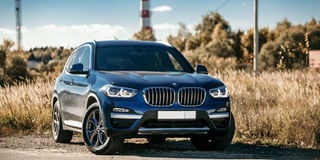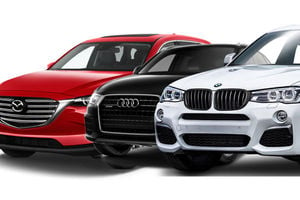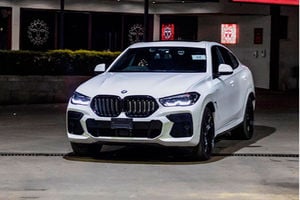
The BMW X3 emphasises driving fun and melds luxury car attributes with the traditional utility of an SUV. PHOTOs/shutterstock
On a Friday afternoon, I set out to test drive a 2013 BMW X3 to learn more about the performance features of the car, fuel efficiency and handiness. My test drive started at Interservice Hotel in Nsambya to Kyanja via the Clock Tower, Entebbe Road, Wandegeya, Kamwokya, Bukoto, Kisaasi, and eventually back to Kyanja.
For starters, the five-seater compact sport utility vehicle runs on an auto-wheel drive (AWD) system. AWD means that it performs more like a full-time four-wheel drive (4WD) car. The difference is that the X3 engages the four wheels that kick in automatically when the vehicle senses rough terrain or a slippery surface regardless of where you drive. It has the option to drive as a complete manual car or as a semiautomatic.
The X3 gives you the flexibility to drive the car in sport, comfort, and eco-pro mode. The three modes rotate around how efficient the car becomes in terms of fuel consumption. For example, when driving in sport mode, you burn a lot more fuel compared to eco-pro and comfort modes. However, the eco-mode puts the car in a condition where it consumes as little fuel as possible by leaving the car in low-consuming gears.
Self-regulating
When I reached the newly constructed Clock Tower junction as I turned into Entebbe Road, facing the City Centre and at Wandegeya traffic lights, I was held up in traffic jam for about 10 minutes. At this moment, the car automatically put itself in idle mode by switching off the engine when I stepped on the brake pedal.
When the traffic jam cleared and I moved the foot off the brake pedal, the engine automatically started again with the gear lever still in drive mode. This start-stop feature improves fuel economy because the car does not use any fuel at all when in jam. This demystifies the false myth that cars burn more fuel when you switch off and restart the engine while stuck in traffic jam.
When it comes fuel consumption, the 11-year old car is comparable to the Toyota RAV4, even with a 2000cc V6 turbo petrol engine. For urban drives, you will be assured of covering eight kilometres per litre of fuel, with mileage becoming better on the highway where the same amount of fuel guarantees you 12km to 14km.
With ample legroom for the front and rear passengers, the X3 has an ample interior where you can flatly recline the rear seats to allow you more space if you want to carry more luggage.
Safety features
As the Sedan BMW 5 series, the seatbelt mechanism of the X3 protects both the chest and the neck. The seatbelt has a pin at the top and how it is placed or worn makes it different. Some models have seat belts that protect the body but are placed a bit high.
The X3 is highly rated by the New Car Assessment Program (NCAP). According to toolkit.irap.org, the NCAP tests new cars and gives them a safety rating from zero to five stars. A rating of zero stars means people in the car would have a higher chance of being injured or dying in a crash and a rating of five stars means people in the car would have a much lower chance of being injured or dying in a crash.
“NCAP assesses the effects of various types of crashes on the people in the vehicle, the effects on pedestrians if they are hit by the car, and safety technologies. The programme uses crash testing (including crash test dummies) which are conducted at various speeds for a front-on crash, side impact crash, and hitting a pole with the side of the car,” the portal states.
Maintenance
Sula Kilimani, a mechanic, says service and maintenance of most BMWs, including the X3, is dependent on the oil you use. If you use the standard recommended engine oil, it will give you a range of 7,000km to 8,000km before doing an oil replacement. The service will cost about Shs280,000 for oil alone because it uses seven litres of oil.
“The resilience of the engine because of its design is a bit higher. The stronger the engine, the more sensitive it will be. If you go into the high-end range in terms of engine capability, it will be typically more sensitive than a standard version and will require the best engine service with the right oil,” Kilimani says.
What the engine is capable of doing and the oil you use matter. The question of whether you service or not does not differ. Any car that has little engine oil or runs on oil that’s not recommended by the manufacturer is prone to engine knocks. It is more about the engine size because of how powerful most of the European cars are because they have different engine ranges, with a few using the same oil type.
Specifications
Consumption - 9.5 (Automatic City), 7.0 (Automatic Highway)
Engine - 2.0L L4 twin- turbo DOHC 16-valves
Power - 241 hp @ 5000 rpm
Transmission - eight-speed automatic transmission with manual mode
Body - Sport Utility
Doors - 5
Seats - 5

